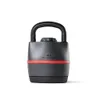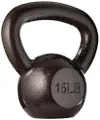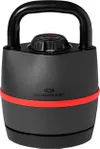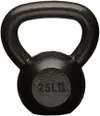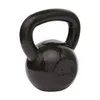
Core workouts don’t have to include isolation exercises to build core muscle. If you’ve so far been relying on exercises like crunches and sit-ups that target one muscle group to strengthen your core, here’s another way to do it.
Over the years, I’ve transitioned from standalone ab workouts to full-body exercises with a strong core focus, picking moves that target multiple muscle groups at once — called compound exercises — while working most core muscles to support, stabilize and strengthen the trunk.
It’s worth noting there’s nothing wrong with adding abs workouts into your routine if you enjoy them, and they certainly have benefits. But compound exercises could help you target and strengthen many muscles, making your routines more efficient.
If you want to diversify your core workouts, here are three things I have learned from adding multi-muscle compound exercises to my routine.
1. You can work smarter

The most popular isolation ab exercises (like crunches) help activate and fatigue one particular muscle group. Isolating them this way can help build muscle and definition, strengthen an area of weakness, or improve form and technique.
These exercises complement compound moves and are often paired with them during strengthening routines and in physical therapy as accessory exercises. But as with most things in life, they are flawed.
In the isolation versus compound exercise debate, I don’t recommend neglecting compound moves in favor of isolation unless you’re working toward a specific goal. I focus most attention on compound ones because they allow anyone to work smarter and recruit more muscle groups, joints and ligaments to build stronger muscles.
Get instant access to breaking news, the hottest reviews, great deals and helpful tips.
2. You can hit more muscle groups in less time

Think of your core as a system of muscles that wrap around your torso, run from the ribcage to the pelvis and even include the glutes, lower back, diaphragm, and hip flexors. That’s a lot of muscles to target.
Your core works as a unit to help you move — think bending, extending, twisting, running, walking, or stretching. So, as a general rule, why not work on recruiting them together?
While ab exercises specifically strengthen your abs, they won't always activate many other muscles or develop functional core strength, so I recommend strengthening the whole group to build a robust torso.
Multi-muscle exercises help your body work in harmony, improve stability, posture and balance, and reduce the likelihood of developing injuries. You’re not just targeting those six-pack muscles or “abs” but recruiting your core as a group, which is how these muscles work during daily life.
Isolation exercises have a firm place in the fitness world, but for efficiency, you might get more bang for your buck by programming compound or full-body exercises with a strong core focus.
3. You can program more creatively

Bored of planks, sit-ups and Russian twists? We hear you. When focusing more on compound lifts, a whole new world of exercise styles and possibilities open up to you.
It can be difficult listening to the swirling advice about how to split your time and what workouts offer the best results. There’s no hard and fast rule on the best way to train your core — every coach has a different approach, and everyone responds differently to training stimuli.
Some gymgoers swear by “bro splits,” which involve dividing muscle groups by the days of the week, including a core day. Others simply schedule full-body resistance training three to five days a week.
I’ve seen incredibly strong athletes focus full-time on CrossFit workouts while other svelte lean machines swear by a regular Pilates routine to build tone. And some mix it up for a bit of everything, including whatever happens to be trending on TikTok.
You don’t need ab workouts to build core muscle, but I do recommend training your core. My approach is to incorporate compound core exercises and full-body workouts into your routine that naturally engage your core muscles. However you choose to train, aim for several times per week. Simple.
Bottom line
What sorts of exercises should you try? Compound exercises can be core-specific, like planks, or just heavily recruit the core muscles, like deadlifts. There are a lot of benefits of compound lifts, too.
Multi-joint multi-muscle exercises naturally engage the core muscles for stability and balance and to support trunk movement during exercise. Think about exercises like thrusters and heavy squats that require core strength to help safely drive movement, but you wouldn't call them out-and-out "core exercises."
That said, whichever way you program exercise, the amount of muscle definition you see as a result of regular training will also depend on body fat percentage. For example, those with a low body fat percentage and developed abdominal muscles may sport a six-pack. If body composition matters to you, you’ll need to dial into your diet and energy demands to help focus on building muscle definition.
Finally, it’s worth noting that a six-pack isn’t directly indicative of how functionally strong you are. I’m a personal trainer, I don’t have a six-pack and I’ve never been stronger or had better functional core strength than when I ditched the fussy gym splits and ab workouts and adopted a mix of CrossFit and yoga instead.
I don’t train every day (because, you know, life), and the CrossFit workouts primarily focus on full-body, functional workouts that naturally and heavily recruit the core muscles. Everyone’s different, and many factors, including genetics, hormones, lifestyle and training, can influence your results.
One lesson you won’t go wrong with is adding more compound exercises to your routine — whoever you are or however you train.
More from Tom's Guide
Compound exercises can be core-focused (like planks) or full-body-focused (like thrusters and squats). Here are some ideas.
- Here are the best CrossFit workouts to try
- What happened when our writer did Pilates every day for a month
- Core 5 dumbbell exercises to develop muscle mass, strength and power
- Core 5 barbell exercises for beginners
- What are the “big 5” compound lifts in weight training?
- 7 best kettlebell ab exercises
- Forget the gym — build full-body muscle with a set of dumbbells in just 25 minutes

Sam Hopes is a level 3 qualified trainer, a level 2 Reiki practitioner and fitness editor at Tom's Guide. She is also currently undertaking her Yoga For Athletes training course.
Sam has written for various fitness brands and websites over the years and has experience across brands at Future, such as Live Science, Fit&Well, Coach, and T3.
Having coached at fitness studios like F45 and Virgin Active and personal trained, Sam now primarily teaches outdoor bootcamps, bodyweight, calisthenics and kettlebells.
She also coaches mobility and flexibility classes several times a week and believes that true strength comes from a holistic approach to training your body.
Sam has completed two mixed doubles Hyrox competitions in London and the Netherlands and finished her first doubles attempt in 1:11.
